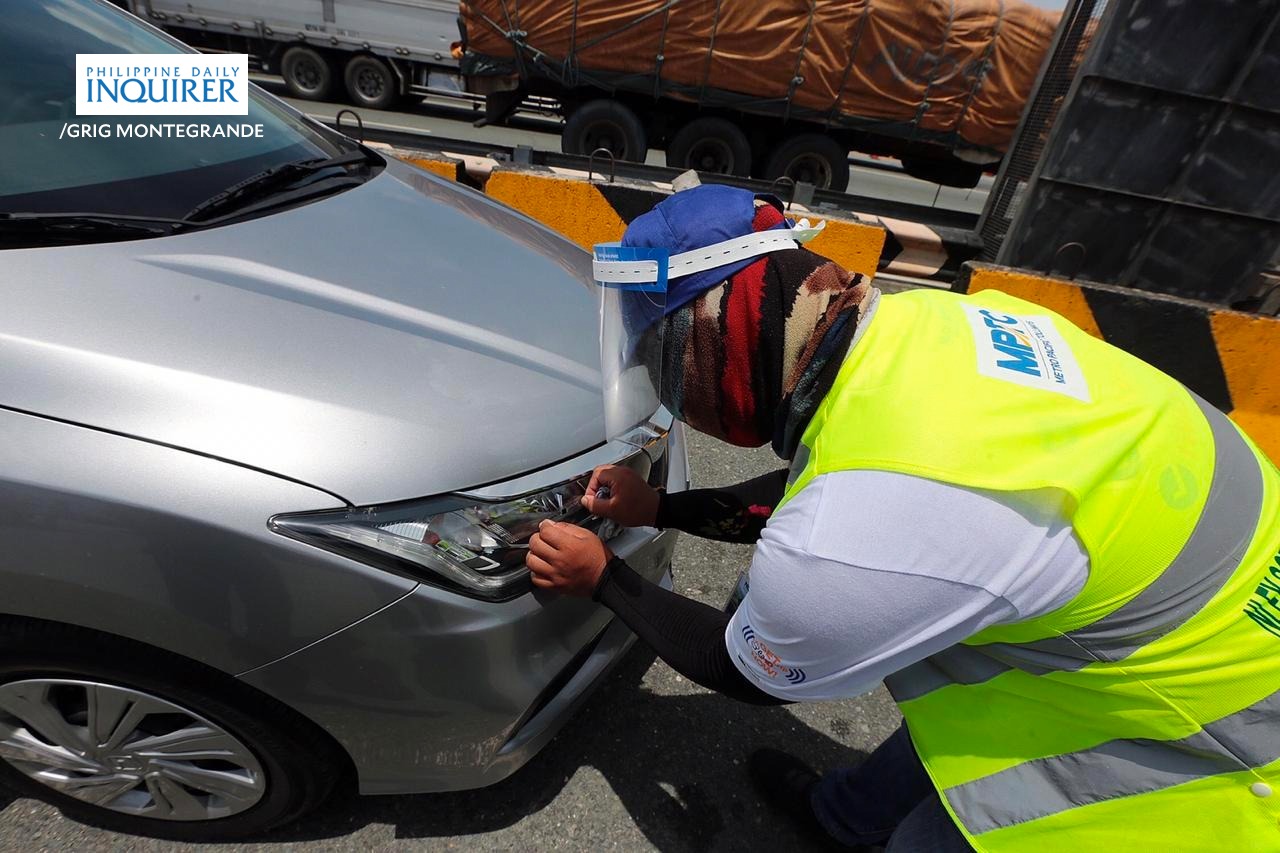Gatchalian urges DOTr to put up more RFID installation booths

(File Photo) Motorists have their RFID stickers installed at the Balintawak Toll Plaza Customer Service Center parking area on Thursday, August 27. INQUIRER/GRIG C. MONTEGRANDE
MANILA, Philippines — Senator Win Gatchalian is urging the Department of Transportation (DOTr) to provide more booths for the installation of Radio-Frequency Identification (RFID) stickers and help ease the traffic build-up along the expressways caused by motorists lining up.
In a statement on Friday, Gatchalian said he noticed the growing public frustration over regular toll lanes being converted into RFID installation lanes following the cashless and contactless transaction in toll plazas that took effect on December 1.
“It’s obviously the lookout of the toll operators to ensure that the RFID sensors are working and should be able to read each and every car sticker that passes through it because otherwise, what’s the use of this kind of technology if it does not serve its purpose?” said Gatchalian, vice chairman of the Senate economic affairs committee.
“I see the need for a cashless toll collections system at the expressways especially at this time when we have yet to contain the spread of the coronavirus disease (COVID-19). But we cannot just sit back and allow motorists to be stuck in traffic. Time wasted cannot be regained,” the senator emphasized.
Citing a Japan International Cooperation Agency (JICA) survey in 2017, the senator said the traffic problem in Metro Manila has cost P3.5 billion in lost opportunities per day and it is projected to amount to P5.4 billion daily by 2035 if no changes are made.
Article continues after this advertisementHe likewise pressed for an enhanced information campaign on matters concerning the installation of electronic tags as public confusion adds up to the traffic situation.
Article continues after this advertisementWhile the DOTr had said that the implementation of the 100 percent cashless transaction started on December 1, the installation of RFID stickers will continue beyond the said date.
The DOTr also assured that there will be no apprehension for vehicles without RFIDs until Jan. 11, 2021.
“These cashless/contactless transactions are aimed at easing the passage of motorists by sparing them from the heavy traffic especially during rush hours. In the meantime, however, something needs to be done to help the motorists cope in this transition period,” Gatchalian said. Miggy Dumlao, trainee